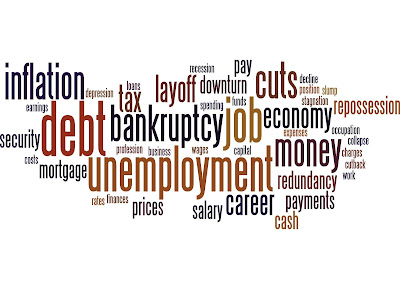Getting Unemployment Insurance in the US During the COVID-19 Pandemic
The ongoing coronavirus pandemic has caused a huge dent in the US economy. Due to the closure of companies to contain the virus, business operations have come to a halt. As a ripple effect, thousands of people have lost their jobs and are looking at an uncertain future. An estimate by the Economic Policy Institute (EPI) shows that the total job loss is likely to be 3 million.
On March 27th, President Donald Trump approved a government aid in the form of an unemployment allowance. Soon after the announcement, between 70,000 and 281,000 people applied for the aid by the end of March. In the week that ended on April 4th, a record 6.6 million people applied for unemployment benefits.
Will All the Unemployed People Get Unemployment Insurance?
The answer is no. Under normal circumstances, most unemployed people will not receive unemployment insurance benefits. People, who quit their jobs voluntarily, those looking for their first job and people who are getting back to the labor market after leaving it voluntarily will not receive unemployment insurance benefits. Also, undocumented workers, self-employed people, gig workers and students are usually not eligible for these benefits.
In most states, the required minimum earnings to qualify for unemployment benefits are between $1,000 and $5,000 in the previous year. Due to different eligibility criteria, the unemployment insurance rate varies drastically across states. For example, in the fourth quarter of 2019, Massachusetts had the highest unemployment insurance rate at 57 percent, whereas Mississippi had the lowest at 9 percent.
The Eligibility for Unemployment Benefits and How to Apply
The government is allowing the states to change their laws to support people who have lost their job because of the virus outbreak. Changes in laws will depend on the state. The general condition for unemployment benefits is that an individual must have lost his/her job due to the shutting down of business.
The specific eligibility criteria for unemployment benefits are below:
Applicants must meet their state’s wage requirements or time worked during a specific period or base period. This is usually the first four out of the last five completed calendar quarters before filing the claim.
- Applicants should have lost their jobs due to no fault of their own. It means workers must be separated from their jobs because of the non-availability of work.
- There is also a need to fulfill additional requirements laid out by the individual states. You can find the requirements of your own state’s program here.
The government has created the Pandemic Unemployment Act to make independent contractors and all part-time employees eligible for unemployment benefits. People will receive an amount between $250 and $550 every two weeks.
People need to apply for unemployment benefits through their state’s website. Usually, there will be a one-week unpaid waiting period before they start receiving benefits. However, several states, including California, Ohio and New York have waived this waiting period.
Checklist of Things When Applying for Unemployment Insurance
- The applicant’s social security number
- The Alien Registration Number if the applicant is a non-citizen.
- Information regarding all the employers of an applicant in the past 18 months. It should include the name of the company, the name of the supervisor, both mailing and physical address and phone number.
- The Employer Registration Number/the Federal Employer Identification Number (FEIN) of the applicant’s most recent employer (you can find FEIN on the W-2 forms).
- Remuneration earned and how the payment was received (for example, hourly, weekly or monthly).
- The reason why an applicant worked reduced hours with the employer or why the applicant is no longer working with the employer.
- The applicant’s most recent separation form or DD 214 form if he/she served in the military.
New Legislation May Extend Unemployment Benefits for More Than Six Months
Most states will pay unemployment benefits for 26-weeks or up to six months. However, the new legislation may provide benefits for a longer period. During circumstances of high unemployment, eligible applicants may receive extended benefits. The Senate passed a bill recently that is likely to make extended benefits available in the states where the unemployment rate is more than 10 percent. To alleviate the economic distress of the labor market due to this pandemic, the CARES Act has come up with a $2 trillion relief package. The act will extend the duration of unemployment insurance benefits by 13 weeks and increase payments by $600 per week until July 31. However, it is still impossible to make a forecast right now as to when the need for social distancing will end and when economic conditions will get back on track.
The Department of Labor has listed the unemployment insurance offices of all the 50 states, along with phone numbers and links to websites with detailed information.
If you have questions regarding unemployment insurance or other areas of insurance, give us a call at (650) 328-1000 or fill out the online contact form and we will be glad to assist you.



Comments
Post a Comment